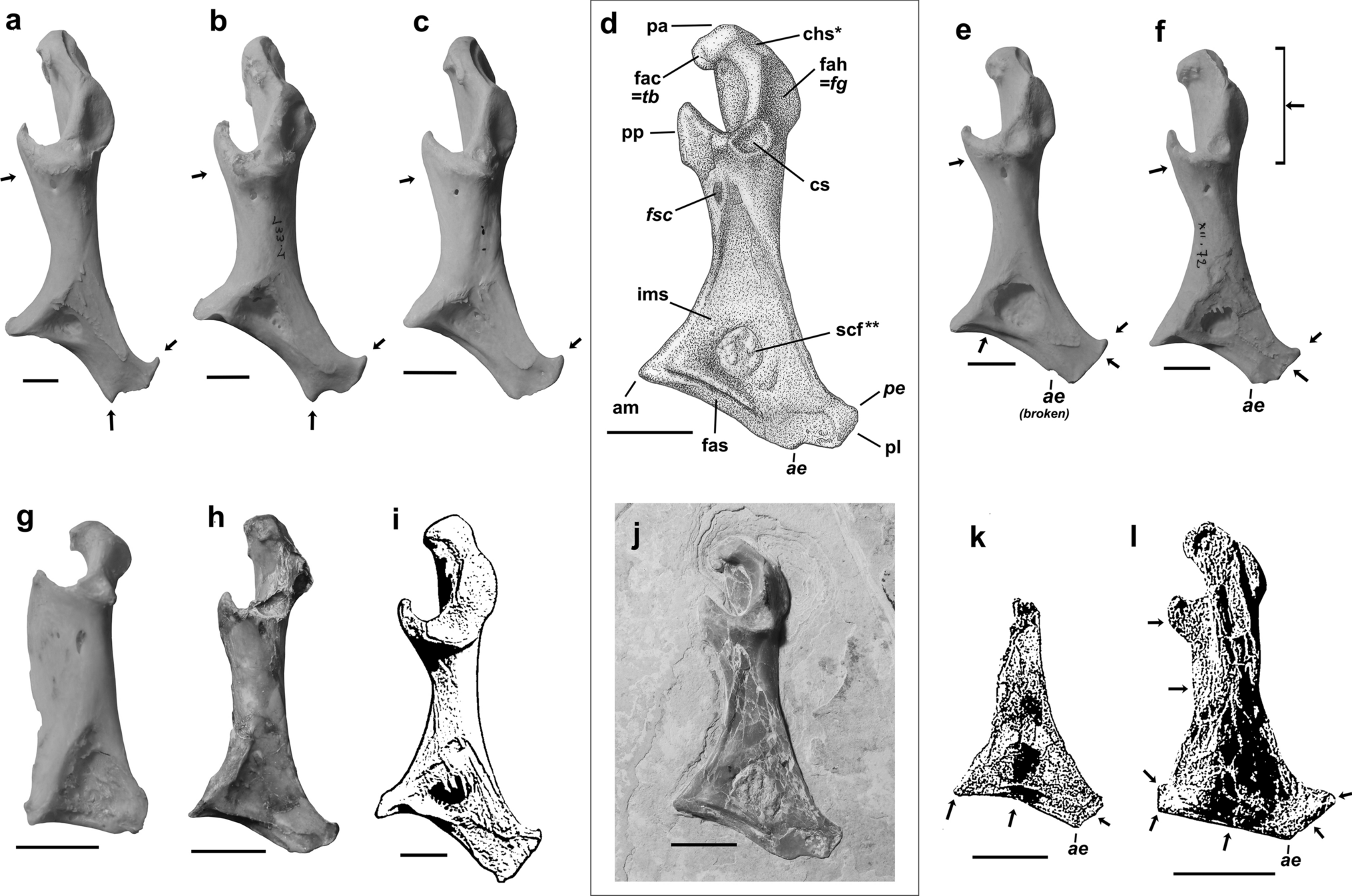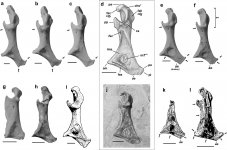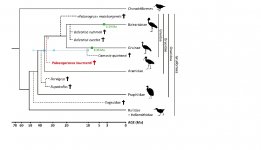Fred Ruhe
Well-known member

Antoine Louchart & Anais Duhamel, 2021
A new fossil from the early Oligocene of Provence (France) increases the diversity of early Gruoidea and adds constraint on the origin of cranes (Gruidae) and limpkin (Aramidae)
Journal of Ornithology in press

 link.springer.com
DOI: https://doi.org/10.1007/s10336-021-01891-z
link.springer.com
DOI: https://doi.org/10.1007/s10336-021-01891-z
Abstract
Cranes (Gruidae) have a poor early fossil record, and the oldest ascertained fossils hitherto referred to the family (either as crown or stem-representatives) date back to the early or middle Miocene. Other Gruoidea have an even scarcer fossil record. Psophiidae and Aramidae are virtually unknown as fossils, and other fossil representatives of the Gruoidea are difficult to place. Here, we describe a new fossil that sheds new light on the early history of stem Gruidae, a right coracoid in dorsal view preserved on slab in limestone laminites of the early Oligocene « Calcaires de Campagne-Calavon» (Alpes de Haute Provence, France). It is compared with extant and fossil morphologically related taxa, and appears to differ from all extant and fossil relatives in the Gruoidea. The new fossil represents, among the Gruoidea, a new genus and species, Palaeogeranos tourmenti, placed within the clade (Aramidae + Gruidae) that is referred to as epifamily Gruoidae. Within Gruoidae, placement is tentative and we give arguments leading to propose a possible position as a stem Gruidae, a hypothesis to be tested with further discoveries. In this hypothesis, aged around 30 million years, the new fossil suggests that the stem of the Gruidae would date back to at least the earliest Oligocene, which is still compatible with current molecular phylogenetic divergence dates estimations, given the confidence intervals. Palaeogeranos will potentially help refining future calibrations for molecular phylogenetic studies, at least concerning the earliest Gruoidae (Aramidae + Gruidae).
Enjoy,
Fred
A new fossil from the early Oligocene of Provence (France) increases the diversity of early Gruoidea and adds constraint on the origin of cranes (Gruidae) and limpkin (Aramidae)
Journal of Ornithology in press

A new fossil from the early Oligocene of Provence (France) increases the diversity of early Gruoidea and adds constraint on the origin of cranes (Gruidae) and limpkin (Aramidae) - Journal of Ornithology
Cranes (Gruidae) have a poor early fossil record, and the oldest ascertained fossils hitherto referred to the family (either as crown or stem-representatives) date back to the early or middle Miocene. Other Gruoidea have an even scarcer fossil record. Psophiidae and Aramidae are virtually...
Abstract
Cranes (Gruidae) have a poor early fossil record, and the oldest ascertained fossils hitherto referred to the family (either as crown or stem-representatives) date back to the early or middle Miocene. Other Gruoidea have an even scarcer fossil record. Psophiidae and Aramidae are virtually unknown as fossils, and other fossil representatives of the Gruoidea are difficult to place. Here, we describe a new fossil that sheds new light on the early history of stem Gruidae, a right coracoid in dorsal view preserved on slab in limestone laminites of the early Oligocene « Calcaires de Campagne-Calavon» (Alpes de Haute Provence, France). It is compared with extant and fossil morphologically related taxa, and appears to differ from all extant and fossil relatives in the Gruoidea. The new fossil represents, among the Gruoidea, a new genus and species, Palaeogeranos tourmenti, placed within the clade (Aramidae + Gruidae) that is referred to as epifamily Gruoidae. Within Gruoidae, placement is tentative and we give arguments leading to propose a possible position as a stem Gruidae, a hypothesis to be tested with further discoveries. In this hypothesis, aged around 30 million years, the new fossil suggests that the stem of the Gruidae would date back to at least the earliest Oligocene, which is still compatible with current molecular phylogenetic divergence dates estimations, given the confidence intervals. Palaeogeranos will potentially help refining future calibrations for molecular phylogenetic studies, at least concerning the earliest Gruoidae (Aramidae + Gruidae).
Enjoy,
Fred
Last edited:







